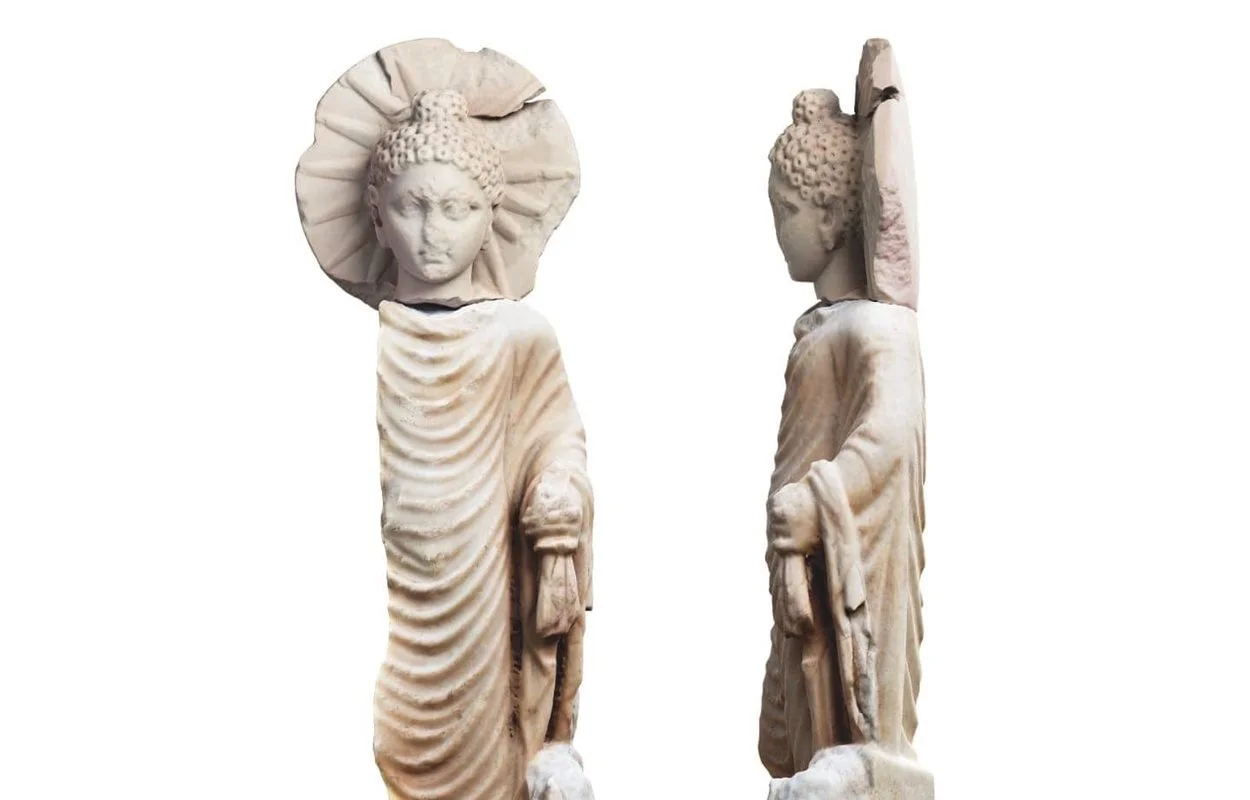An archaeological mission excavating in Berenice Troglodytica has uncovered a statue depicting Buddha that dates from the 2nd century AD.
Berenice Troglodytica, also known as Berenike, was an Ancient Egyptian seaport on the western shore of the Red Sea, Egypt. The city was founded by Ptolemy II Philadelphus (285–246 BC), who named it after his mother, Berenice I of Egypt.
During the Roman period, between the 1st and 2nd century AD, the city was one of the primary waystations for the trade of war elephants and exotic goods such as pepper, semi-precious stones, cloth, and ivory, transported between India, Sri Lanka, Arabia, and Upper Egypt.
Archaeologists from a joint Polish-American mission have found a 71cm tall statue depicting a standing Buddha while excavating in a temple complex.
Around the head of the statue is a halo of sunlight, often found in Buddhist iconography and religious texts, describing how Lord Buddha emitted rays of light (of different colours: blue, yellow, red and white) during the time of nirvana and Parinirvana.
According to Dr. Marius Goyazda, the stone used for the statue may have originated from a region south of Istanbul, with one theory suggesting that traders from India had the statue carved locally and dedicated to the nearby temple.
Excavations of the temple also discovered an inscription in Hindi (Sanskrit), dating from the reign of the Roman Emperor, Philip the Arab (AD 244 to 249), in addition to Greek inscriptions which are from the 1st century BC.
Archaeologists also uncovered two coins from the central Indian kingdom of Satavahana, an ancient Indian dynasty based in the Deccan region. The Satavahanas were one of the first Indian kingdoms to produce state coinage struck with images of their rulers, with the two coins found at Berenice Troglodytica dated to around the 2nd century AD.
Ministry of Tourism and Antiquities
Header Image Credit: Ministry of Tourism and Antiquities





